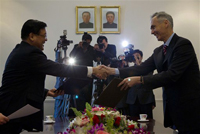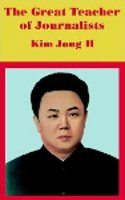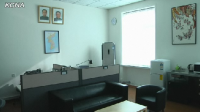 The Associated Press has opened a news bureau in Pyongyang making it the first western news agency to have a reporter and photographer based in the North Korean capital.
The Associated Press has opened a news bureau in Pyongyang making it the first western news agency to have a reporter and photographer based in the North Korean capital.
The bureau represents a coup for the AP over the competition, but its close cooperation with the state-run Korean Central News Agency, necessitated to realize the deal, brings with it questions over editorial independence.
AP President Tom Curley and KCNA President Kim Pyong Ho officially opened the bureau in Pyongyang on Monday. It came six months after the two met in New York and signed a basic agreement towards the office.
The bureau will be housed inside KCNA’s headquarters and will be permanently staffed by two North Koreans: reporter Pak Won Il and photographer Kim Kwang Hyon.
 AP didn’t provide details of the background of the two and declined to say if they were on the payroll of AP or KCNA.
AP didn’t provide details of the background of the two and declined to say if they were on the payroll of AP or KCNA.
Regardless of their employment status, they were almost certainly trained in the North Korean media-slash-propaganda machine with books such as “The Great Teacher of Journalists” — a heavy tome filled with advice to journalists by Kim Jong Il. Their appointment would have been approved by North Korean authorities.
The two have already contributed to AP’s coverage over the last few weeks on the death of Kim Jong Il.
Pak was credited as providing details for several AP stories on the funeral, including “Thousands Gather In Snow To Mourn Kim Jong Il.” Kim Kwang Hyon is believed to be the photographer responsible for several unattributed photographs issued by AP of the funeral.
 Video footage of the office released by KCNA shows pictures of Kim Il Sung and Kim Jong Il hanging on the wall above some desks. A TV hangs on the wall and there also appears to be a refrigerator and microwave oven.
Video footage of the office released by KCNA shows pictures of Kim Il Sung and Kim Jong Il hanging on the wall above some desks. A TV hangs on the wall and there also appears to be a refrigerator and microwave oven.
It’s this closeness with KCNA that has AP walking a delicate editorial line.
AP is based on a traditional of independent reporting, and KCNA is anything but independent. Its Japan-based website describes the agency as speaking “for the Workers’ Party of Korea and the DPRK government,” and its daily output is heavy with glorification of its leader and threats against South Korea and the U.S.
But when it comes to North Korea, KCNA is the only game in town.
North Korea has remained one of the few places in the world that has remained almost totally impenetrable to foreign journalists. Visits are strictly supervised and controlled, and information flow in and out of the country is just a trickle. This was demonstrated vividly in December when governments and media organizations were apparently unaware that anything was amiss in the days before the death of Kim Jong Il was announced.
Getting coverage from Pyongyang, albeit with assistance from the government’s news agency, is probably better than nothing.
The real payoff will come in the regular reporting trips by AP staffers that form part of the deal. Korea Bureau Chief Jean Lee and Chief Asia Photographer David Guttenfelder will oversee the bureau and are likely to continue visiting the country.
It also gives AP a leg up on competitors such as Reuters and AFP when major news breaks in Pyongyang, such as the recent death of Kim Jong Il.
Here’s some of the coverage from Twitter:




I didn’t know that north-koreans journalists use some australians microphones (RØDE).
http://www.kcna.kp/userAction.do?action=videoindex&lang=eng&newsyear=2012&newsno=194676
http://www.rodemic.com/